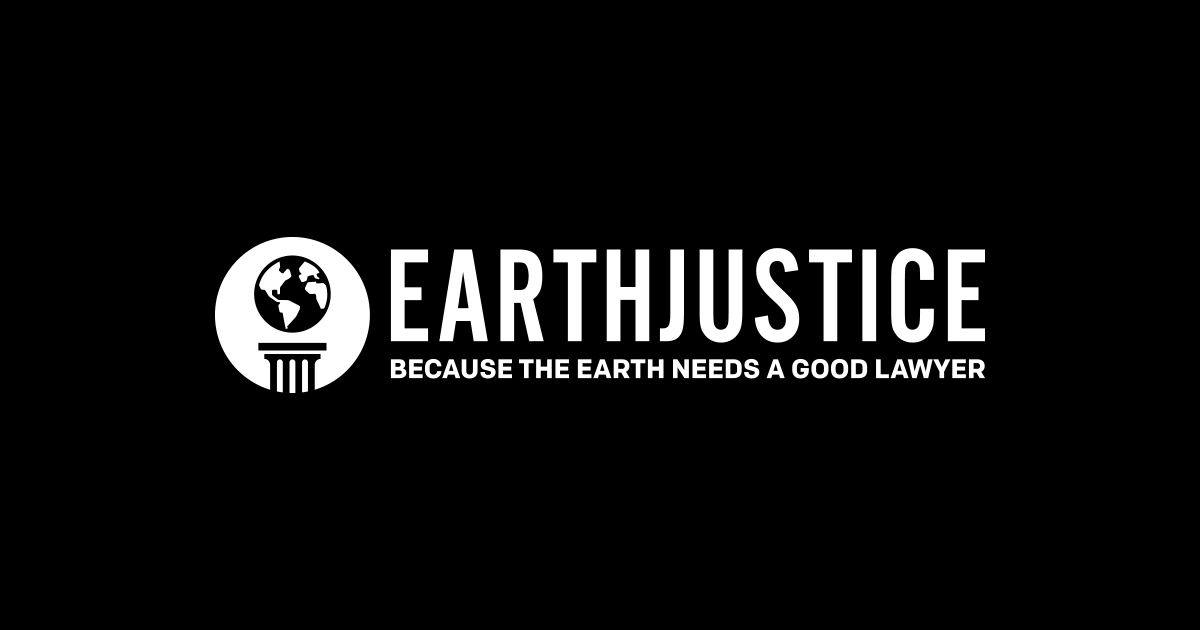EPA Denies Industry Petition to Deregulate Air Toxics-Emitting Combustion Turbines
EPA Denies Industry Petition to Deregulate Air Toxics-Emitting Combustion Turbines Earthjustice


Environmental Protection Agency Denies Industry Petition to Delist Energy Turbines as Major Sources of Toxic Air Pollution
Washington, D.C.

The Environmental Protection Agency today publicly denied an industry petition to delist energy turbines as major sources of toxic air pollution so companies can avoid meeting health-protective environmental standards.
The EPA’s refusal to delist Stationary Combustion Turbines, which generate power at hundreds of major polluting sources throughout the country, will ensure that the owners of these sources cannot dodge pollution control requirements. Environmental groups commended the EPA for resisting pressure from industry lobbyists and keeping important health and safety protections in place.
“Today’s decision upholds critical environmental protections that are essential for safeguarding public health, particularly in communities that have historically borne the brunt of industrial pollution,” said Earthjustice Director of Federal Clean Air Practice James Pew. “Keeping pollution control requirements in place is not just a matter of regulatory compliance; it’s a fundamental environmental justice issue. EPA did the right thing by rejecting industry’s attempt to dodge these requirements and get a free pass to pollute.”
Because of the health and environmental threat posed by hazardous air pollutants, the Clean Air Act sets a high bar for petitions to deregulate a whole category of polluters, such as the one filed by industry groups, including the American Petroleum Institute, to delist stationary turbines. Industry groups have repeatedly attempted to delist stationary turbines without making the required showing. Today, EPA found that the industry’s latest petition fell far short and denied it “with prejudice” – making clear that it would reject any future petition “as a matter of law unless such future petition is accompanied by substantial new information or analysis.” This decision represents a significant step toward making major polluters control their toxic pollution and protecting fenceline communities that are already overburdened.
Stationary combustion turbines are power generators used primarily for making electricity or mechanical power and occasionally for propulsion. They operate similarly to jet engines but are installed in a fixed position or stationary setting rather than being used for aviation. These turbines burn fuel—often natural gas, but also oil or other liquid fuels—to produce high-pressure gas. These turbines are used for powerplants, at Liquified Natural Gas Terminals, along pipelines to move oil and gas, and as the workhorse inside the petrochemical infrastructure. Their emissions, including nitrogen oxides, carbon dioxide, and other hazardous air pollutants, are regulated under environmental laws to minimize impacts on public health and the environment.
A recent analysis of existing powerplant turbines and LNG terminals shows that these turbines are concentrated in or near Justice 40 tracts, an indicator of how these facilities’ toxic emissions are affecting primarily environmental justice communities.
Quotes from our partners and clients:
- “The EPA’s denial of the petrochemical industry’s bid to ease regulations for these major sources of toxic air pollution is a victory for public health and the environment,” said Jane Williams, Executive Director of California Communities Against Toxics. “This denial ensures that stringent controls on hazardous emissions remain in place, protecting our communities from the dangers of air pollution. The EPA’s commitment to upholding these standards reinforces the importance of robust regulatory frameworks prioritizing our planet’s health and its people over industrial convenience.”
- “Turbines are a major source of air toxics in Texas,” said Dr. Neil Carman, Clean Air Program Director for the Lone Star Chapter of the Sierra Club. “This action today by EPA will help clear the air in our environmental justice communities which are disproportionately affected by the emissions of these turbines.”
- “Southeastern states are facing a huge build out of gas-fired stationary turbines. It is critically important that these turbines remain covered by federal regulations which protect environmental justice communities from dangerous air toxics emissions,” said Keri Powell, Leader of the Air Program of the Southern Environmental Law Center.
SDGs, Targets, and Indicators in the Article
1. Which SDGs are addressed or connected to the issues highlighted in the article?
- SDG 3: Good Health and Well-being
- SDG 7: Affordable and Clean Energy
- SDG 10: Reduced Inequalities
- SDG 13: Climate Action
- SDG 15: Life on Land
2. What specific targets under those SDGs can be identified based on the article’s content?
- SDG 3.9: By 2030, substantially reduce the number of deaths and illnesses from hazardous chemicals and air, water, and soil pollution and contamination.
- SDG 7.2: By 2030, increase substantially the share of renewable energy in the global energy mix.
- SDG 10.2: By 2030, empower and promote the social, economic, and political inclusion of all, irrespective of age, sex, disability, race, ethnicity, origin, religion, or economic or other status.
- SDG 13.2: Integrate climate change measures into national policies, strategies, and planning.
- SDG 15.1: By 2020, ensure the conservation, restoration, and sustainable use of terrestrial and inland freshwater ecosystems and their services.
3. Are there any indicators mentioned or implied in the article that can be used to measure progress towards the identified targets?
- Indicator for SDG 3.9: Number of deaths and illnesses attributed to hazardous air pollutants.
- Indicator for SDG 7.2: Share of renewable energy in the energy mix.
- Indicator for SDG 10.2: Proportion of population with access to affordable and reliable energy services.
- Indicator for SDG 13.2: Number of countries with integrated climate change measures in their national policies, strategies, and planning.
- Indicator for SDG 15.1: Extent of terrestrial and inland freshwater ecosystems protected and conserved.
Table: SDGs, Targets, and Indicators
| SDGs | Targets | Indicators |
|---|---|---|
| SDG 3: Good Health and Well-being | 3.9: By 2030, substantially reduce the number of deaths and illnesses from hazardous chemicals and air, water, and soil pollution and contamination. | Number of deaths and illnesses attributed to hazardous air pollutants. |
| SDG 7: Affordable and Clean Energy | 7.2: By 2030, increase substantially the share of renewable energy in the global energy mix. | Share of renewable energy in the energy mix. |
| SDG 10: Reduced Inequalities | 10.2: By 2030, empower and promote the social, economic, and political inclusion of all, irrespective of age, sex, disability, race, ethnicity, origin, religion, or economic or other status. | Proportion of population with access to affordable and reliable energy services. |
| SDG 13: Climate Action | 13.2: Integrate climate change measures into national policies, strategies, and planning. | Number of countries with integrated climate change measures in their national policies, strategies, and planning. |
| SDG 15: Life on Land | 15.1: By 2020, ensure the conservation, restoration, and sustainable use of terrestrial and inland freshwater ecosystems and their services. | Extent of terrestrial and inland freshwater ecosystems protected and conserved. |
Behold! This splendid article springs forth from the wellspring of knowledge, shaped by a wondrous proprietary AI technology that delved into a vast ocean of data, illuminating the path towards the Sustainable Development Goals. Remember that all rights are reserved by SDG Investors LLC, empowering us to champion progress together.
Source: earthjustice.org

Join us, as fellow seekers of change, on a transformative journey at https://sdgtalks.ai/welcome, where you can become a member and actively contribute to shaping a brighter future.







